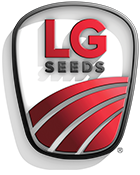AGRONOMICSUPPORT
YOU CAN TAKETO THE FIELD
Assess Late Season Plant Health to Make the Most of Your Crop
Harvestability, late season intactness and late season plant health are just a couple of characteristics farmers search for when selecting their hybrids. As grain harvest draws near, and silage cutters roll, now is a great time to start scouting and analyzing hybrids for stalk quality and plant health. Stalk quality is a key characteristic of hybrid selection. There are several pathogens that target stalk strength. The ability for a hybrid to resist against these diseases can directly impact the harvestability and overall yield of a product.
Some products naturally have better disease tolerances and because of that they can tolerate disease pressure and stand longer in the field if needed. On the other hand, there are hybrids that have great yield potential, but don’t have the late season stalk strength and therefore need to be some of the first fields harvested. Scouting each field to determine if there is stalk rot, and assessing the damage level if it is there, is very crucial in limiting yield loss.
A couple of ways to determine stalk quality, and the severity of a potential problem, is simply the push test or the squeeze method. The push test is a very easy scouting method. When walking through corn fields, just push on plants to see if they can bend and flex well, or if they snap. If plants seem to snap off easy, there is a chance stalk rot is happening. The squeeze method is another easy method. Simply squeeze the stalk near the base of the plant and up near the ear. If the stalk feels squishy or hollow, that indicates the presence of stalk rot.
There are several management factors that can also play a roll in stalk durability. Fertility, planting population, cultivation practices, pest control and hybrid selection all play a key role in late season standability. Hybrid selection is an easy factor to control. LG Seeds breeding program focuses in on key agronomic factors when commercializing hybrids. One specific area is the insertion of the ASR gene. ASR stands for Anthracnose Stalk Rot and is the leading stalk rot disease through much of the Corn Belt. LG Seeds has several key hybrids with the ASR gene. The ASR gene not only helps the plants stalk quality and sturdiness, but it also helps the plant stay healthier and greener later into the season. Healthy plants photosynthesize longer, which helps with better grain fill.
So, this fall when you are determining which fields to harvest first, take a more in-depth approach and scout for more than just dry corn. Harvesting at-risk fields in a timely fashion can greatly impact your bottom line. Talk with your local LG Seeds dealer about late season plant health and let some of our hybrids go to work for you.






Technical Agronomist